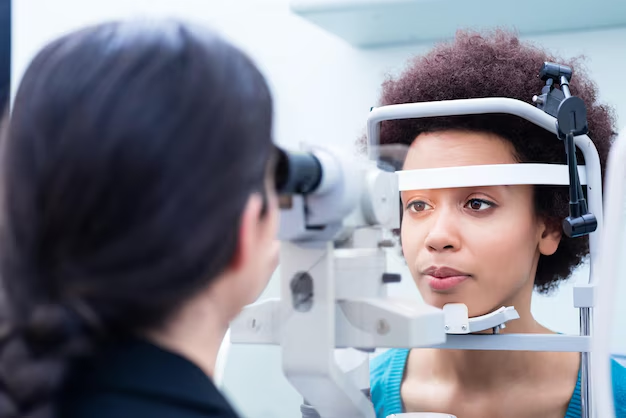Can Cataract Surgery Be Redone? Here's What You Need to Know
For those who have had cataract surgery, the promise of clearer vision is often fulfilled. However, some might wonder if any complications or subsequent changes make it possible, or even necessary, to redo cataract surgery. This article explores all facets of this concern, providing you with the information you need to understand the possibilities and considerations.
Understanding Cataract Surgery
Cataract surgery is a common procedure aimed at removing the cloudy lens of the eye and replacing it with an artificial one. This process usually results in significant improvements in vision. But like all medical procedures, it isn’t immune to potential complications or the need for additional procedures.
The Basics of Cataract Surgery: How It Works
- Purpose: Cataracts cloud and blur vision by affecting the eye's natural lens.
- Procedure: The cloudy lens is removed and replaced with a clear, artificial intraocular lens (IOL).
- Outcome: Most people experience improved clarity and quality of vision.
When Might Repeat Procedures Be Needed?
Cataract surgery itself is not typically redone in the way one might think. Instead, there are various follow-up procedures that might become necessary.
Posterior Capsular Opacification (PCO)
After cataract surgery, some patients develop a condition called posterior capsular opacification (PCO), often referred to as a "secondary cataract." It doesn’t involve a regrowth of the cataract but is rather a clouding of the membrane that holds the IOL in place. Fortunately, this condition is treatable.
- Treatment: A simple and painless laser procedure called a YAG laser capsulotomy.
- Effectiveness: YAG laser capsulotomy is successful and usually restores clear vision without the need for further surgery.
Lens Replacement
In rare cases, the artificial lens might not suit the patient's vision needs due to various factors such as unexpected refractive errors or discomfort.
- Lens Exchange: If necessary, the implanted lens can be exchanged for a different type or strength.
- Considerations: This is an uncommon step and typically pursued only when there is a significant issue with the initial lens.
Surgical Complications
Complications from cataract surgery can occur, but they are relatively rare and typically manageable.
- Examples: Issues like retinal detachment or infection might arise.
- Management: Follow-up procedures or treatments address these complications effectively in most cases.
Exploring Related Eye Health Concerns
Ensuring optimal vision health goes beyond the scope of the initial cataract surgery. There are important considerations to be mindful of post-surgery to ensure long-term success and comfort.
Ongoing Eye Care
- Regular Check-ups: Essential for monitoring the health of the eye and the condition of the artificial lens.
- Vision Changes: Any significant shift in vision clarity or comfort should be promptly addressed.
Other Eye Conditions
Cataract surgery patients might still be at risk for other eye issues unrelated to the surgery or the lens itself, such as:
- Glaucoma or Macular Degeneration: These conditions are separate and must be managed independently from cataract surgery.
FAQs About Cataract Surgery and Redos
Is Cataract Surgery Permanent?
- Yes, in Function: The cataract, once removed, does not return. The artificial lens does not cloud like a natural lens.
- No to Adjustments: Subsequent adjustments or addressing new issues may be necessary, but these aren't the same as redoing the original surgery.
How Can Patients Ensure Long-term Success?
- Follow Instructions: Post-operative guidance from your eye care provider should be diligently followed.
- Report Issues Early: Immediate attention to any discomfort or change can prevent complications.
Conclusion: The Importance of Informed Decision-Making
When considering eye health post-cataract surgery, the key takeaway is that while the procedure itself is not typically repeated, there are cases where follow-up treatments like YAG laser capsulotomy or lens exchange might be necessary. These treatments are usually straightforward and effectively address the issues.
By understanding the procedure and maintaining a proactive approach to eye health, patients can ensure the best possible outcomes. Continuous consultation with an eye care professional is essential in navigating the specific needs and situations that might arise after cataract surgery.
Key Takeaways: Cataract Surgery Follow-up
- 🕶️ Cataracts Do Not Return: The surgery removes cataracts permanently, but follow-up might be needed.
- 🔍 Watch for PCO: If vision clouds after surgery, a YAG laser treatment can clear it up.
- 🛠️ Lens Troubles: Rarely, lens replacement may be required if the original lens doesn’t suit.
- 👁️ Stay Vigilant: Keep regular check-ups and address changes in vision promptly.
- 🏥 Professional Advice: Always consult with your eye care provider for tailored guidance and care.
Understanding the potential need for additional procedures after cataract surgery can enhance your ability to manage and care for your vision, ensuring a clearer, brighter future.

Related Articles
- Are Cataracts Curable
- Are Cataracts Genetic
- Are Cataracts Hereditary
- Are Cataracts Nuclear Sclerosis
- Are Cataracts Painful
- Are Ivizia Eye Drops Okay After Cataract Surgery
- Are You Awake During Cataract Surgery
- Are You Awake For Cataract Surgery
- Are You Put To Sleep For Cataract Surgery
- Are You Sedated For Cataract Surgery